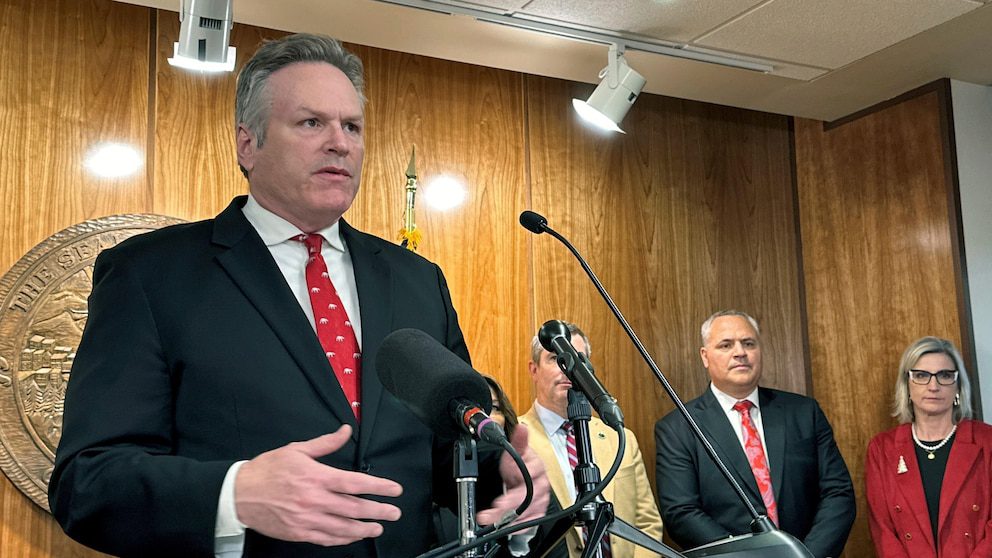JUNEAU, Alaska — Alaska Republican Gov. Mike Dunleavy unveiled a budget plan Thursday that would pay residents an oil-wealth dividend of about $3,400 next year using a formula that lawmakers have all but abandoned and use savings to plug an estimated $990 million deficit.
The proposal does not include an increase in the per-student K-12 school funding formula, though Dunleavy, a former educator, said he expected education to be at the fore of discussions when lawmakers convene for their new legislative session next month. He said he wanted lawmakers to consider his proposal from last session that would provide bonuses to teachers as a way to help recruit and retain them.
Dunleavy blasted the federal government and groups that have challenged oil, mining and other development projects in Alaska, saying it has left the state with choices such as having to make budget cuts, tax residents and businesses, or reduce the size of the yearly dividend. Alaska has no state sales tax or personal income tax, and for years, without resolution, lawmakers have talked about the need for a fiscal plan that moves away from the boom-bust cycles of budgeting tied to the state’s reliance on a volatile commodity: Oil.
Central to a fiscal plan is how much the yearly dividend should be. For years, until 2015, the dividend was paid according to a formula that many lawmakers have since come to view as unsustainable and unaffordable. In 2016, amid deficits, then-Gov. Bill Walker vetoed about half the amount available for dividends, and the state Supreme Court later decided the dividend program must compete for annual funding like any other state program.
The amount has since been set by what can get enough votes to get a budget passed, with debate over the size of the check often overshadowing other issues.
This year’s dividend was $1,312 and cost about $880 million, with a potential for a bonus check of up to $500 next year if oil prices exceed forecasts. Dunleavy on Thursday proposed a dividend for next year in line with the formula last used in 2015, at a cost of about $2.3 billion for checks to residents of about $3,400 each, his budget office estimated.
The toll of inflation is “taking a bite out of everybody’s pocketbook. So we’re hoping that we can keep the PFD as high as possible to help Alaskans afford groceries, afford fuel, etc.,” Dunleavy said at a news conference, referring to the Permanent Fund Dividend.
The budget proposal is a starting point. The House and…
Click Here to Read the Full Original Article at ABC News: US…

